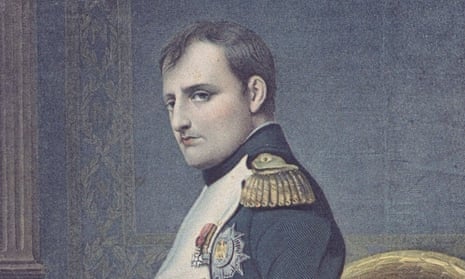In 2007, a historical footnote about France’s relentless military leader Napoleon Bonaparte gained wide attention: he was a failed novelist. The French publishing house Fayard had released the full version of Napoleon’s novella, Clisson et Eugénie, culled from six far-flung, ink-blotted manuscript fragments. That same year, the rediscovery and subsequent sale in France of one of its pages for €24,000 ($27,000) stimulated yet more interest in the emperor’s literary prose.
Now, a substantial section of the manuscript is headed to auction on 21 September at Bonhams in New York, where the auction house expects it will reach as much as $250,000.
While Napoleon manuscripts and memorabilia are relatively common at auction and can realize staggering sums – such as €1.9m for one of his beaver fur bicorne hats in 2014 – collectors typically vie for something emblematic of the man, said Christina Geiger, director of fine books and manuscripts at Bonhams. Which makes this scrap of his creative writing something of an outlier. “Normally, that maybe detracts from the value, but in this case, his character is so fascinating … It just gets at those psychological contradictions in a way that his military planning documents or something like that wouldn’t as much.”
Clisson et Eugénie is unabashedly autobiographical. Penned in the autumn of 1795, while Napoleon was still rising in the ranks of the French army, the novel centers around an officer named Clisson, “a man of fervent imagination, with his blazing heart, his uncompromising intellect and his cool head”. The war-weary Clisson decides to quit his position and enjoy the spa baths of central France. There he meets two young women, Amélie and Eugénie, and falls desperately (and tragically) in love with Eugénie. While tender, this romance is also quite tame. The closest the author comes to sex may be: “Their hearts fused … the most exquisite voluptuousness flooded the hearts of the two enraptured lovers.”
The novella only runs about 22 scribbled pages, so the plot swiftly progresses from love to marriage to melancholy.
Like his protagonist, Napoleon had just turned 26; his great conquests were still ahead of him. And, like his protagonist, Napoleon had also favored a Eugénie: Bernardine Eugénie Désirée Clary, to be exact. She was the sister-in-law of Napoleon’s brother Joseph. The two met in the summer of 1794 and carried on a warm epistolary relationship. Many believe they were engaged, but her family blocked the union and the breakup was finalized by September 1795. Napoleon married Joséphine de Beauharnais the following March.
By then, his sentimental manuscript was presumably tucked away somewhere, safe from prying eyes while he built an empire. Napoleon still had the manuscript when he died in exile in 1821. After that, the unbound pages were scattered, according to Peter Hicks and Émilie Barthet, in an interpretive note published with their 2009 English translation of the novel.
Hicks and Barthet methodically reconstructed Clisson et Eugénie from the six known fragments, all in various states of drafting and revision, for the 2007 French publication. The “most important” and lengthiest piece, referred to as the Kornik manuscript, fills 13 pages and resides at the Kornik Library of the Polish Academy of Sciences. It was previously published in 1929 and 1955.
The next-longest section is the one heading to auction later this month, the content of which is “fairly crucial”, said Geiger. “It’s four pages and they go from meeting to falling in love to being married for seven years.” According to Geiger, the manuscript arrived in the United States in 1957, after having changed hands among continental booksellers in the early 20th century. It has most recently been in the collection of David Karpeles, the California collector who founded 14 manuscript libraries around the United States, stocked them with unique historic documents such as a draft of the bill of rights and Mendelssohn’s manuscript of his Wedding March, and opened them to the public for exhibitions and school programs.
Then there are four minor fragments, each consisting of a page or two. Two of them are held by the State Historical Museum in Moscow, and two are privately owned.
“Napoleon is not often thought of these days as a writer. And if he is, it’s certainly not as an author of fiction,” Hicks told the Guardian. “That being said, some commentators before 1900 described him as the greatest French writer of the 19th century, thinking most notably about his correspondence.” Indeed, his letters number about 42,000, and the Foundation Napoleon, where Hicks is manager of international affairs, is currently publishing the final three volumes of a 15-volume set of Napoleon’s complete correspondence.
“When you become the ruler of a good part of the known world – as a result of a military and political acumen that astounded contemporaries – literary ability ends up being just an ‘also ran’ accomplishment,” Hicks said.

Comments (…)
Sign in or create your Guardian account to join the discussion